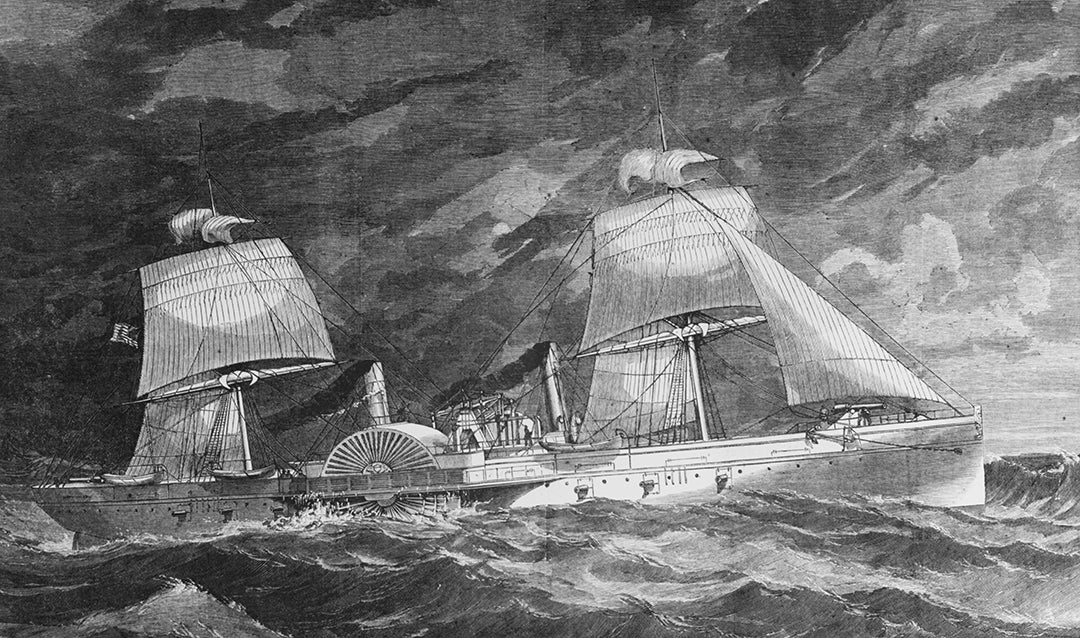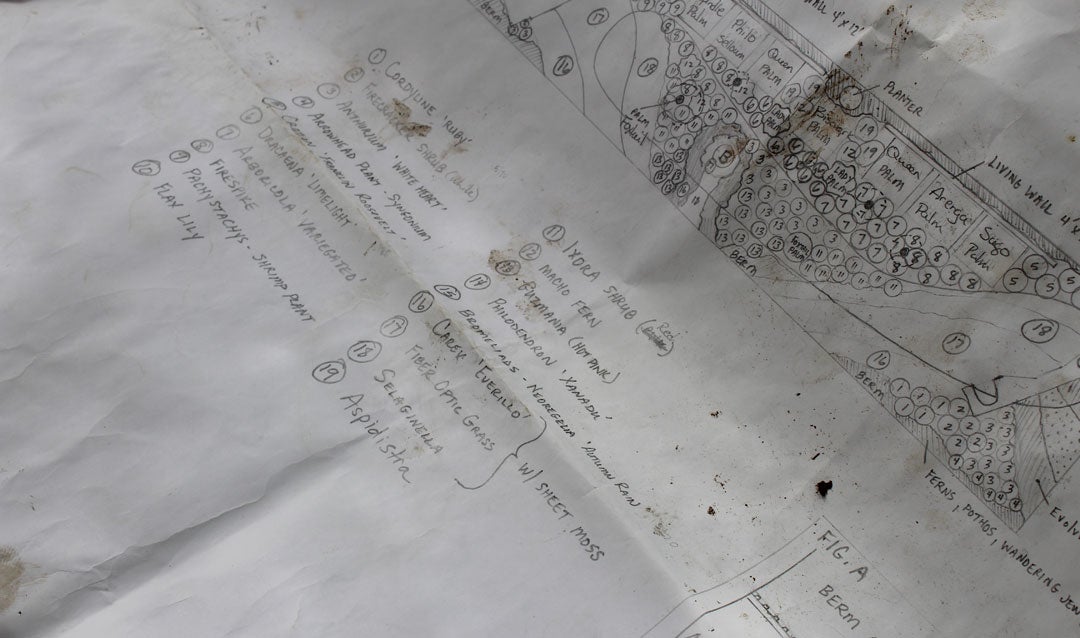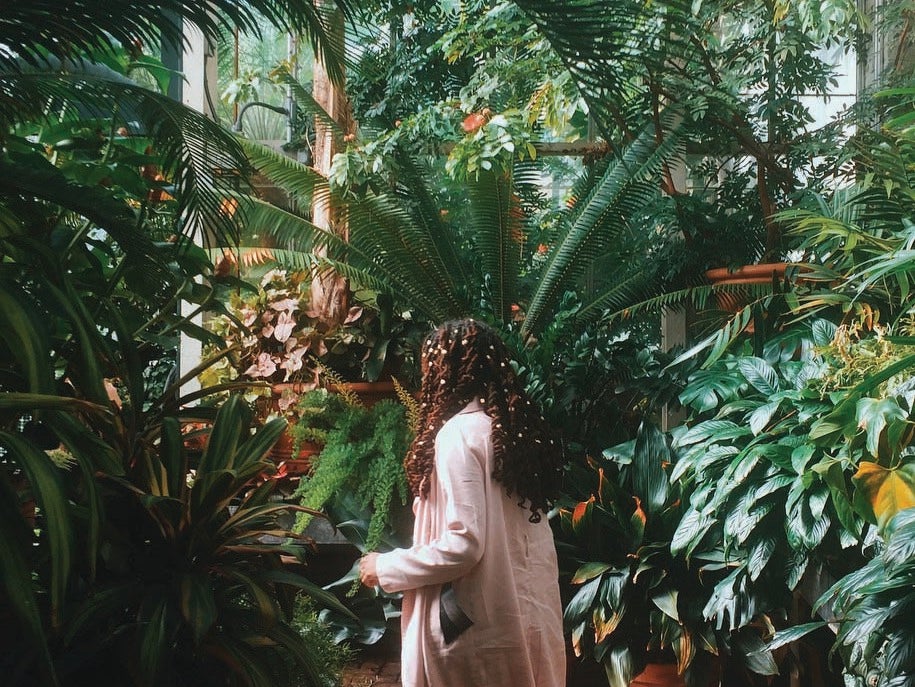In the summer of 2019, Biltmore Gardens Railway brought large-scale model railroads and handmade buildings connected with Biltmore and its founder George Vanderbilt to two locations on the estate—the Conservatory and Antler Hill Village.
The exhibition featured replica structures fashioned from all-natural materials, largely collected from the estate, to offer a one-of-a-kind, fun-for-all-ages experience.
Enjoy a special look at the structures and stories that inspired Biltmore Gardens Railway.
Conservatory Display: Structures from the estate and surrounding area

Photograph of Biltmore House and the Italian Garden, ca. 1910
Biltmore House with Fountain & Rampe Douce
Completed in 1895, Biltmore House was a collaborative effort between George Vanderbilt and architect Richard Morris Hunt. It took six years to construct America’s Largest Home®. The 250-room French Renaissance chateau contains more than four acres of floor space, including 35 bedrooms, 43 bathrooms, and 65 fireplaces.

Photograph of the Stable Complex construction from George Vanderbilt’s collection, ca. 1894
Stable Complex
An important part of a turn-of-the-century country home, the stables housed the Vanderbilts’ 30–40 driving and riding horses. Correspondence in Biltmore’s Archives indicates that George Vanderbilt made every effort to procure the best horses possible for the estate. Original horses’ names included Ida, Pamlico, and Maud.

Photograph of the Conservatory from George Vanderbilt’s collection, ca. 1910
Conservatory
This grand structure was built to provide flowers and plants for Biltmore House year-round—a role it continues to fulfill today. Carefully placed at the lower end of the Wall Garden so as not to obstruct the view from Biltmore House, the Conservatory includes a Palm House and an Orchid House and spans more than 7,000 square feet.

Photograph of All Souls’ Church from George Vanderbilt’s collection, ca. 1906
All Souls’ Church
Commissioned by George Vanderbilt, All Souls’ Church was the anchor—architecturally, spiritually, and socially—of nearby Biltmore Village. The church as well as the rest of the buildings in the village were the result of a collaboration between Biltmore House architect Richard Morris Hunt and landscape architect Frederick Law Olmsted.

Photograph of the Biltmore Passenger Station from George Vanderbilt’s collection, ca. 1899
Biltmore Passenger Station*
The Passenger Station in Biltmore Village was the first stop for many of the Vanderbilts’ guests when they arrived in Western North Carolina on their way to the estate. Family and friends were met there by the Vanderbilts’ carriage or car and brought up the breathtaking three-mile Approach Road to Biltmore House.

Photograph of deer at the Bass Pond Waterfall from the Biltmore collection, ca. 1950
Bass Pond Waterfall
Designed by landscape architect Frederick Law Olmsted, the Bass Pond was created by greatly enlarging an old creek-fed millpond. In order to keep the pond free of sediment and debris caused by heavy rains, Olmsted engineered an ingenious flume system to divert debris and storm water through a conduit laid on the lake bed.

Photograph of The Gardener’s Cottage from George Vanderbilt’s collection, ca. 1892
The Gardener’s Cottage
One of the first buildings completed on the estate, the Gardener’s Cottage served as the residence of Biltmore’s first head gardener. The one-and-a-half story stone cottage was originally occupied Mr. Robert Bottomley, who was the estate’s head gardener until November 1903.

Photograph of the Lodge Gate from George Vanderbilt’s collection, ca. 1900
Lodge Gate
Located at the entrance to the estate from Biltmore Village, the Lodge Gate provided round-the-clock security by means of a resident gatekeeper. Other entrances to Biltmore also had gatehouses and gatekeepers, though the Lodge Gate was considered the main entrance to George Vanderbilt’s grand estate.
Antler Hill Village Display: Landmarks from George Vanderbilt’s travels

Photograph of Pisgah National Forest Entry Gate, ca. 1916-1936
Pisgah National Forest Entry Gate – Transylvania County, North Carolina
Just before George Vanderbilt’s death in 1914, he was involved in negotiations to sell a large portion of his estate to the federal government in hopes that it would become a forest preserve. His wife Edith later completed this undertaking, selling 87,000 acres of the estate to establish the core of what later became Pisgah National Forest.

Photograph of Vanderbilt Mansion in Hyde Park, ca. 2009
Vanderbilt Mansion – Hyde Park, New York
George Vanderbilt’s brother Frederick Vanderbilt and his wife Louise created a seasonal home in Hyde Park, NY. The house was inspired by a classical Palladian villa and was surrounded by formal and informal gardens designed by Frederick Law Olmsted, who later served as the landscape architect for Biltmore.

Photograph of a Dutch windmill taken by George Vanderbilt’s grandson, William A. V. Cecil, ca. 1950
Windmill & Three Classic Canal House Façades – Amsterdam, The Netherlands
The Vanderbilt family line originated in Holland in the village of De Bilt, not far from Amsterdam. The Vanderbilts’ ancestors immigrated to the Dutch colony of New Netherland around 1650, eventually settling near present-day Staten Island, New York. George Vanderbilt visited his family’s homeland in 1897.

Photograph of the Eiffel Tower from George Vanderbilt’s collection, ca. 1890
Eiffel Tower – Paris, France
This Paris landmark was already an icon when George and Edith Vanderbilt were married on June 1, 1898 in a civil ceremony after a whirlwind courtship abroad. An understated religious ceremony was held the following day at the American Church of the Holy Trinity, attended only by family and close friends.

Photograph of the Arc de Triomphe from George Vanderbilt’s collection, ca. 1885
Arc De Triomphe – Paris, France
After the Vanderbilt’s Parisian marriage ceremony, the wedding party attended a breakfast at the apartment Edith shared with her sisters on Rue Vernet, just an avenue away from the iconic Arc de Triomphe. Edith’s sister Natalie provided two bottles of champagne that their maternal grandfather had set aside at Edith’s birth to be served on her wedding day.

Colorized photograph of Tower Bridge, ca. 1900
Tower Bridge – London, England
In June 1897, George Vanderbilt rented an apartment on London’s Pall Mall to witness the celebration surrounding Queen Victoria’s 60-year reign. Among his guests viewing the festivities from the balcony was his future bride, Edith Stuyvesant Dresser, likely marking the beginning of their romance.

Engraving of the USS Vanderbilt, ca. 1862
USS Vanderbilt – Transatlantic Service
Cornelius “The Commodore” Vanderbilt, George Vanderbilt’s grandfather and founder of the family fortune, commissioned a steamship in 1856 dubbed the Vanderbilt, once hailed as “the largest vessel that has ever floated on the Atlantic Ocean.”
*Feature image: Recreation of Biltmore Passenger Station; this structure is on display in both the Conservatory and Antler Hill Village.



























































